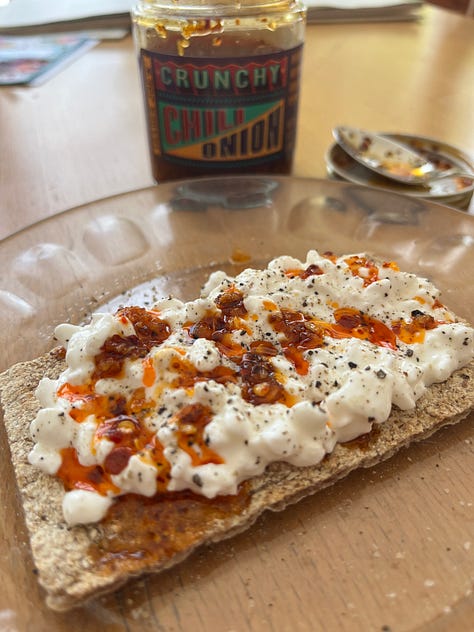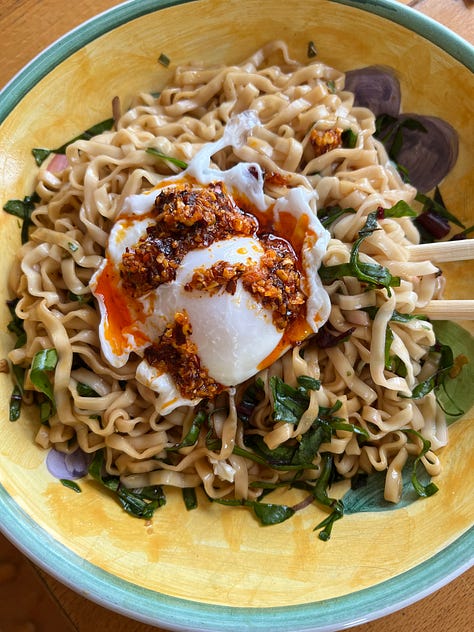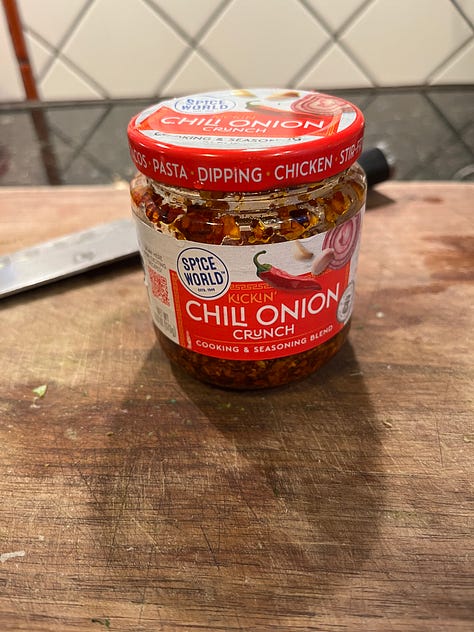Climbing On the Chile Crisp Bandwagon
Understanding the origins of the spicy condiment brings an appreciation

Chile Crisp, Chile Crunch, Crunchy Garlic in Chile Oil—there are many variations of this new seasoning phenomenon. New to me, that is. Our daughter Rose has been slathering it on dumplings and ramen for years, after living in LA. But I’ve been slower to embrace it, preferring a more classic approach. Now initiated, I fear there is no going back. I am equally enamored and determined and now make my own. I’ve tracked down the origin story and understand the process behind the finished product.
This year in How To Eat and Drink we have Tiptoed through salt, then pepper, then Tony Chachere/Cajun spice but all that is just a tune-up to Chile Crisp, a knock-your-socks-off condiment that grows on you with exposure.
Chili sauces have been around for thousands of years in China, particularly in the southwestern Guizhou Province where spiciness and pungency reign supreme. In 1989 a widow named Tao Huabi opened a noodle shop called the Economical Restaurant in Guiyang, the developing capital of the province. When Tao saw how people craved her spicy chili sauce, she closed the noodle shop, focused on condiments, and then licensed the business, Laoganma or “Old Godmother,” in 1997. Today the company produces 1.3 million bottles of the sauce daily in a dozen varieties, not all that far behind the 1.8 million bottles of ketchup produced daily by Heinz who has been marketing products since 1876.
Once you get your chili crisp eyes on, you will see the condiment at grocery stores everywhere. But it is not difficult to make at home where you can control the amount of heat and add other ingredients that you like. Many of the commercial chili crisps contain MSG, but not all. Check the label if you like to avoid that added ingredient.



The prices of the condiment vary widely, from $3.41 for the classic 7.4-ounce jar of Lao Gan Ma to upwards of $10 even $20 for a 4 to 6-ounce jar of the bougie labels.
There are lots of recipes for homemade chili crisps and many use fresh onions and garlic, which may result in a better product, but come with a food safety risk. Serious Eats, with a recipe by Sohla El-Waylly, includes photos and lots of tips and warns of the botulism danger of not drying out the onions and the garlic thoroughly. To avoid this danger, the recipe I opted to adapt was from Genevieve Ko in the NYT Cooking. Using freeze-dried alliums also speeds up the process and my first batch of Chile Onion Crisp took about 7 minutes, start to finish.
Now I can get to the fun part—experimenting. It’s Super Sunday, I’m making popcorn for the game, I’ll start there. Will report!










It's the best!